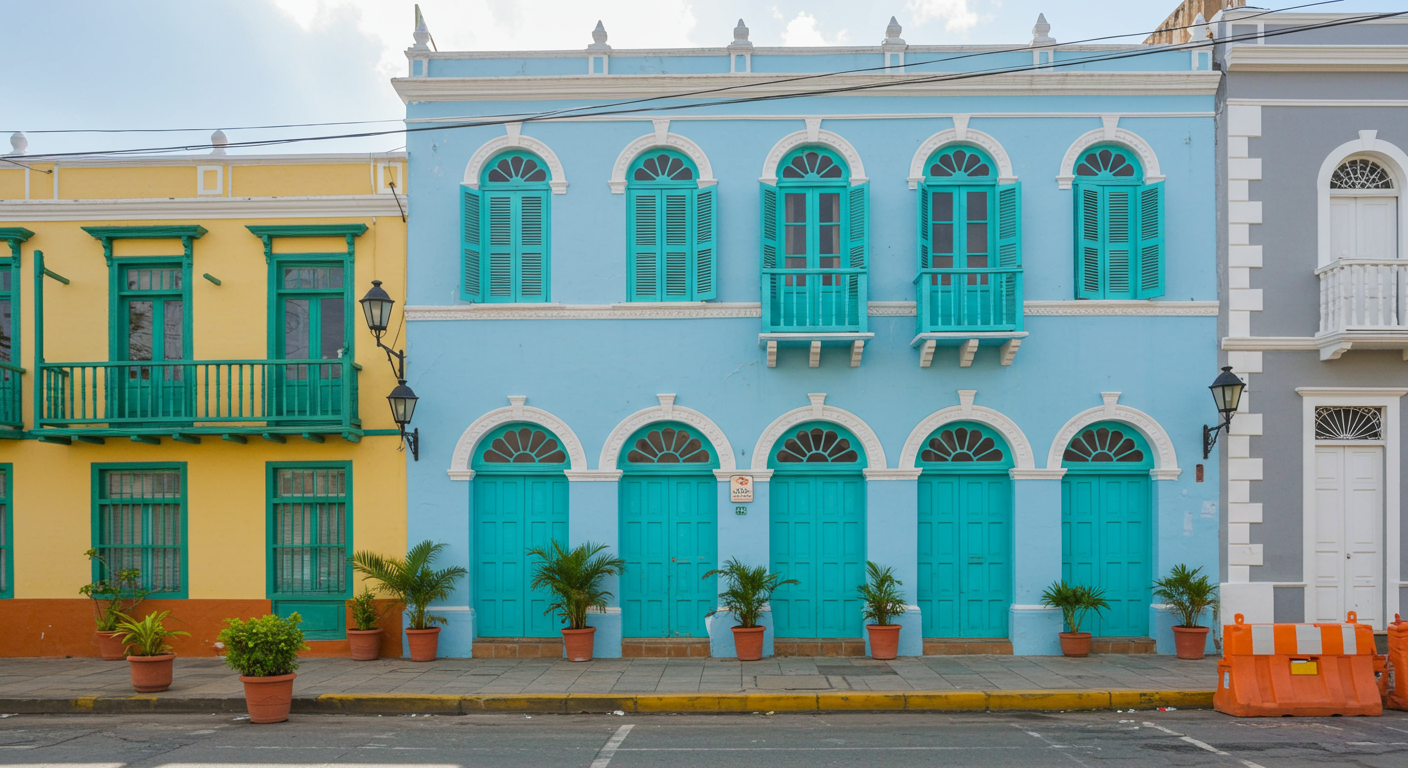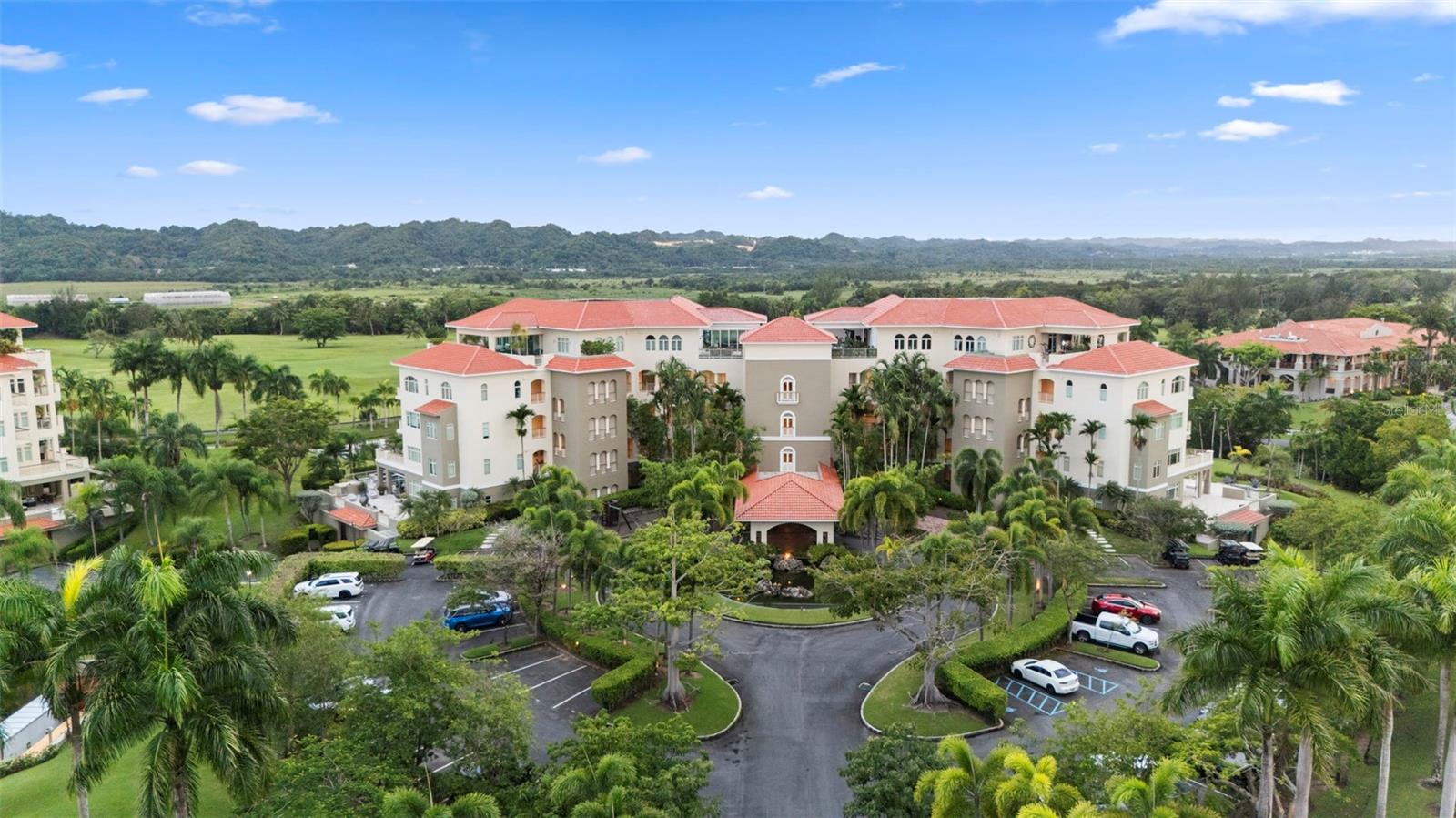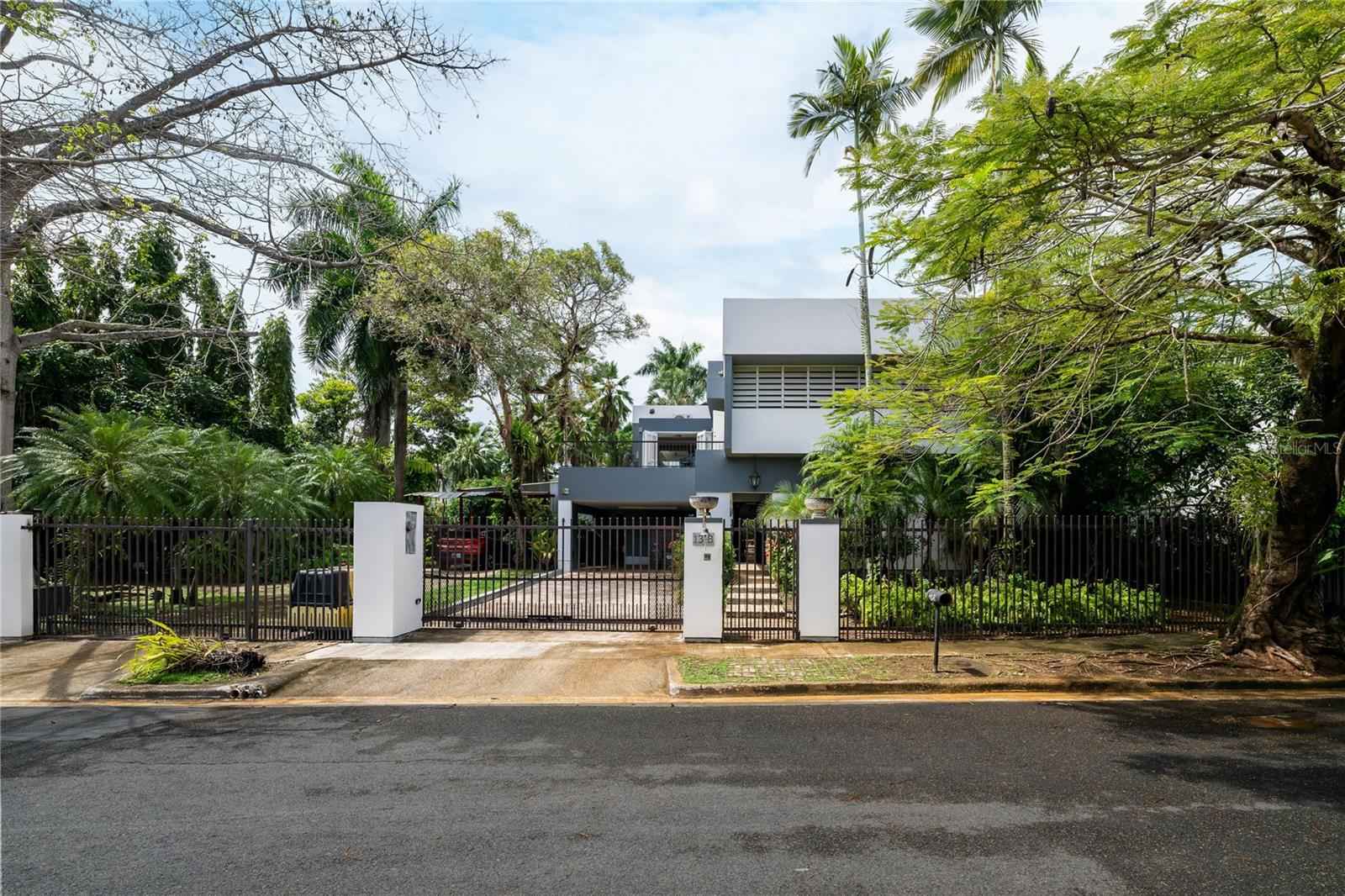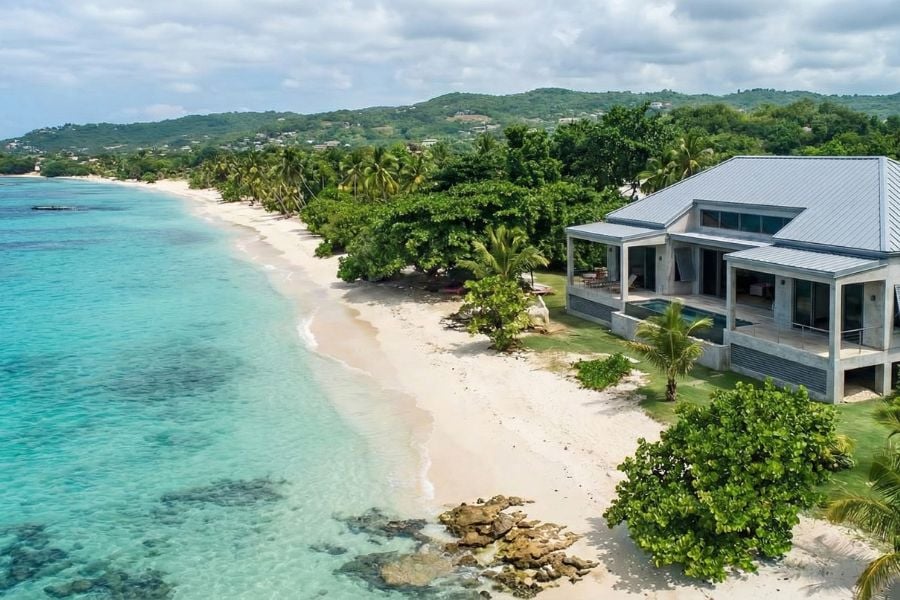Exquisitely renovated Spanish Colonial home for sale in Old San Juan, this 2,716 SF masterpiece near the Governor’s Mansion blends historic elegance with modern luxury, featuring 3 bedrooms, soaring ceilings, original tilework, indoor patios, and iconic balconies in a prime, secure location.
Portfolio risk management is fundamental to any investment strategy, ensuring that potential threats to returns are adequately identified, assessed, and mitigated. This is particularly crucial for real estate-heavy portfolios, where fluctuations in market dynamics can significantly impact value. By incorporating robust risk management practices, investors can better navigate economic cycles, shifting market conditions, and unforeseen disruptions.
Effective asset management practices are critical in identifying and addressing the unique risks associated with a real estate-heavy portfolio in Puerto Rico. Understanding the intricate landscape of property-related risks—such as market volatility, liquidity challenges, and regional economic changes—becomes a cornerstone of a successful investment strategy. In this blog, we will delve deeper into how to identify, mitigate, and measure the unique risks associated with a real estate-heavy portfolio in Puerto Rico.
Key Takeaways
- Comprehensive insurance and resilient infrastructure are essential to mitigate natural disaster risks.
- Diversifying across property types and regions reduces localized risk exposure.
- Monitoring market-specific metrics like cap rates and occupancy rates aids in strategic planning.
- Maintaining liquidity reserves provides a safety net during unexpected financial challenges.
Portfolio Risk in Puerto Rico Real Estate
Portfolio risk in Puerto Rico real estate requires strategic consideration due to the island's distinct market characteristics. Understanding these factors helps investors make informed decisions and safeguard their investments from potential pitfalls.
Market-Specific Risks
-
Economic and Political Factors
Puerto Rico's political status as a U.S. territory brings advantages and challenges. While investors benefit from federal support and tax incentives like Act 60, the territory's economic stability can be affected by its dependency on mainland economic policies and shifts in political priorities. The potential for debt restructuring, changing fiscal policies, and political gridlock can create volatility, directly influencing property values and demand.
-
Natural Disaster Risks
The island's geographical location makes it vulnerable to hurricanes, which pose significant risks to real estate. Storm damage can lead to costly repairs and higher insurance premiums, impacting profitability and long-term property value. Investors must consider the structural integrity of buildings, the comprehensive insurance coverage required to mitigate these risks, and potential downtime in rental income due to disaster recovery periods.
-
Tourism and Seasonal Demand
Tourism is critical in Puerto Rico's real estate market, particularly for short-term rental properties. Seasonal variations can lead to fluctuating occupancy rates, impacting rental income and return on investment. Investors should be aware of this dependency and plan for periods of lower demand, which can affect cash flow and profitability.
Asset Concentration Risks
-
Real Estate-Heavy Portfolio Exposure
A heavy focus on real estate as an asset class poses inherent risks, especially when confined to one geographic region. Market downturns, economic shifts, or local crises can outsize a concentrated portfolio, threatening long-term income and asset value. Investors should evaluate diversification options to spread risk across asset classes or geographic areas.
-
Local Market Dependency
Relying solely on Puerto Rico's market performance can pose challenges, as economic and market conditions on the island can be unpredictable. Any significant changes, such as economic recessions or policy shifts, can directly impact rental income, property sales, and overall portfolio performance. Investors must be prepared with contingency plans that account for potential market fluctuations.
Interest Rate and Financing Risks
-
Financing Constraints
Securing financing for real estate in Puerto Rico can present unique challenges. Despite the island's association with the U.S., regulations and economic conditions may limit lending options and influence mortgage terms. This can create higher barriers to entry and refinancing difficulties, impacting investment flexibility and cash flow.
-
Interest Rate Fluctuations
Changes in interest rates can significantly affect real estate investments, influencing mortgage affordability and property values. Rising interest rates can reduce the pool of potential buyers, drive down property prices, and compress investor returns. Staying informed about interest rate trends is crucial for managing long-term investment viability.
Measuring and Calculating Risks
Measuring and calculating risks is essential for investors to understand their real estate portfolios' potential downside and volatility. By applying quantitative tools and risk indicators, investors can make informed decisions that enhance the resilience of their investments.
Risk Assessment Tools
Value at Risk (VaR) for Real Estate
VaR estimates the maximum expected loss of an investment over a set period under normal market conditions.
Example:
An investor with a $5 million property portfolio in Puerto Rico might use VaR to determine that there is a 95% probability losses won't exceed $300,000 in a month. This helps set thresholds for risk tolerance and planning.
Stress Testing
Stress testing simulates extreme scenarios to assess a portfolio's resilience.
Example:
A Puerto Rico-focused portfolio could model impacts from Category 4 hurricanes or sudden shifts in U.S. economic policy. This prepares investors for worst-case scenarios by identifying potential vulnerabilities and backup plans.
Beta and Volatility in Real Estate Markets
Beta measures an asset's return sensitivity compared to the broader market, indicating volatility.
Example:
If a property in San Juan has a beta of 1.5, it's 50% more volatile than the general real estate market. Understanding beta helps investors decide on risk management strategies to balance potential returns with market fluctuations.
Risk Indicators and Metrics
- Occupancy and Vacancy Rates Monitoring occupancy and vacancy rates is vital for evaluating demand-side risk in real estate. High vacancy rates could signal reduced rental income and potential oversupply in the market, while high occupancy rates reflect strong demand and stability. Analyzing trends in these rates can help investors anticipate changes in rental income and identify opportunities to optimize portfolio performance.
- Market Capitalization Rates Capitalization rates (cap rates) are a key metric for understanding market risk and potential return on investment. In Puerto Rico, cap rates can be influenced by factors such as local economic conditions, interest rate trends, and property type. A higher cap rate generally suggests greater risk and higher potential returns, whereas a lower cap rate indicates less risk and potentially more stable returns.
- Debt-to-Equity Ratio for Portfolio Stability Managing the debt-to-equity ratio is essential for maintaining portfolio stability. A balanced ratio ensures that leverage is used effectively without exposing the portfolio to excessive financial risk. In real estate-heavy portfolios, particularly in a market like Puerto Rico, maintaining a manageable level of debt can help cushion against economic downturns and provide the flexibility needed to adapt to changing conditions.
Mitigating Risks in Puerto Rico Real Estate Portfolios
Mitigating risks is crucial to protecting real estate investments and ensuring steady portfolio performance, especially in a market as dynamic as Puerto Rico's. Below are the essential Do's and Don'ts for risk mitigation:
Do's
- Do invest in diverse geographic locations: Investing in various areas across Puerto Rico, such as combining properties in San Juan with holdings in emerging regions like Rincón or Ponce, can help spread exposure and reduce market-specific risks.
- Do add mixed-use, residential, and commercial properties: Creating a balanced portfolio with different property types optimizes cash flow streams and minimizes the impact of downturns in any single sector.
- Do secure comprehensive insurance plans: Ensure your properties have robust coverage for hurricanes, floods, and earthquakes to protect against severe weather-related financial losses.
- Do invest in resilient infrastructure: Opt for properties with disaster-resistant features like hurricane-proof windows and elevated foundations to reduce potential damage during extreme weather events.
- Do use fixed-rate financing or interest rate swaps: Fixed-rate options or interest rate swaps help mitigate the risk of fluctuating interest rates, keeping mortgage costs stable.
- Do maintain liquidity reserves: Keeping cash reserves on hand can help manage unexpected expenses, such as property repairs or periods of low occupancy following natural disasters.
Don'ts
- Don't overconcentrate in a single region or property type: Limiting investments to one area or type of property increases exposure to localized economic changes and natural events, amplifying risk.
- Don't underestimate the importance of insurance: Basic coverage is often not enough; comprehensive insurance is crucial to cover potential large-scale losses.
- Don't ignore the added costs of property resilience: Skipping investments in structural improvements to enhance resilience may result in larger future expenses.
- Don't rely solely on variable-rate loans: Variable-rate loans can increase financial strain if interest rates rise unexpectedly.
- Don't deplete cash reserves: Using up cash reserves without keeping an emergency buffer can leave you vulnerable during periods of unexpected financial pressure.
Luxury Properties and Houses for Sale
Investing in luxury properties and houses for sale in Puerto Rico can be both rewarding and secure when approached with strategic risk management to safeguard your investment and maximize returns. Trust Christie's International Real Estate Puerto Rico to guide you through finding exclusive, resilient properties and investment opportunities that align with your long-term investment goals.
50 SAN FRANCISCO ST SAN JUAN PR, 00901
Carr. 693 Km.10 HM 7 PLANTATION VILLAGE DRIVE #1202 DORADO PR, 00646
This turnkey, fully furnished 4-bedroom, 4.5-bath villa in Dorado Beach’s Plantation Village offers 3,690 sq ft of elegant air-conditioned living plus 372 sq ft of sunset-facing terraces, premium appliances, golf cart parking, 24/7 gated security with backup systems, and effortless access to world-class amenities including the Clubhouse, Fitness & Wellness Center, Sports Hub, The Watermill, golf, tennis, and pickleball.
3 PEDROSA STREET GARDEN HILLS GUAYNABO PR, 00966
This architectural jewel in Garden Hills Norte, Guaynabo—featuring elegant design, seamless indoor-outdoor living with terraces, koi ponds, infinity pool, luxurious amenities, and proximity to San Juan—offers a serene yet sophisticated retreat available for rent.
Conclusion
Mastering portfolio risk management in Puerto Rico's real estate market requires a thorough understanding of local economic, political, and natural challenges. By employing effective risk mitigation strategies, diversifying investments, and using comprehensive risk assessment tools, investors can safeguard their portfolios, optimize returns, and ensure long-term financial stability in this dynamic market.
At Christie's International Real Estate Puerto Rico, we confidently leverage our expertise to assist clients in the Puerto Rican real estate market. Whether buying, selling, or renting, trust us to guide you toward opportunities that align with your investment goals and lifestyle aspirations.
FAQs
What is portfolio risk management in real estate?
Portfolio risk management in real estate involves identifying, assessing, and mitigating potential risks that could negatively impact investment returns. This process ensures that real estate-heavy portfolios remain resilient and balanced despite market fluctuations, economic changes, or unforeseen disruptions. Effective risk management strategies include diversifying property types and locations, securing comprehensive insurance, and maintaining liquidity reserves to handle unexpected financial challenges.
What is portfolio risk in investment management?
Portfolio risk in investment management refers to the potential for financial loss within an investment portfolio due to various factors such as market volatility, economic shifts, interest rate changes, or region-specific challenges. In real estate investments, especially in Puerto Rico, portfolio risk can be influenced by economic and political factors, natural disasters, and market-specific metrics. Understanding these risks allows investors to implement strategies that protect their portfolio's value and optimize returns over the long term.
What is portfolio investment in real estate?
Portfolio investment in real estate involves allocating capital across multiple property assets to create a diversified collection of real estate holdings. This approach can include residential, commercial, and mixed-use properties in various geographic locations. Portfolio investment aims to spread risk and maximize returns by balancing potential income and capital appreciation against the inherent risks associated with real estate markets.
In Puerto Rico, for example, strategic portfolio investments may involve properties in different regions, each with unique market conditions and opportunities.











